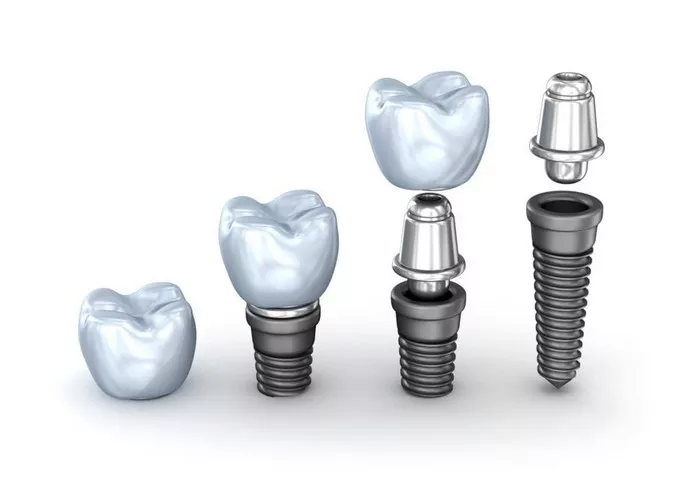Dental implants have revolutionized restorative dentistry, providing patients with durable and natural-looking replacements for missing teeth. One crucial component of a dental implant system is the implant fixture. This article delves into the importance, types, materials, and placement procedures of implant fixtures to give a comprehensive understanding of their role in dental implants.
What are Dental Implant Fixtures?
An implant fixture is a small, titanium post that serves as the foundation for a dental implant. It is surgically placed into the jawbone to replace the root of a missing tooth. Over time, the bone integrates with the fixture in a process known as osseointegration, ensuring the implant is securely anchored in place. The fixture provides stability and support for the prosthetic crown or bridge that will eventually be placed on top, completing the restoration of the missing tooth.
The Role of the Implant Fixture in the Dental Implant Process
The implant fixture acts as the anchor point for the entire dental implant system. After the fixture is placed into the jawbone, it requires several months to integrate with the bone. During this period, the fixture fuses with the bone tissue, creating a solid base for the final crown, bridge, or denture. This stable base ensures that the restoration mimics the function and appearance of a natural tooth.
Materials Used for Implant Fixtures
Implant fixtures are typically made from titanium or its alloys. Titanium is widely favored because of its biocompatibility, which means it is highly compatible with human tissue and minimizes the risk of rejection. Additionally, titanium is durable, corrosion-resistant, and lightweight, making it ideal for long-term use in the mouth. Some advanced implants may use materials such as zirconia, a ceramic material known for its aesthetic appeal and strength.
Types of Implant Fixtures
There are several types of implant fixtures available, each designed to meet different patient needs and anatomical conditions:
Endosteal Implants
The most common type of implant fixture is the endosteal implant, which is placed directly into the jawbone. These implants are usually made of titanium and are suitable for patients with healthy bone structure. Endosteal implants can support one or more artificial teeth and are the preferred choice for most cases.
Subperiosteal Implants
Subperiosteal implants are placed under the gum but above the jawbone, typically used for patients who have insufficient bone height. These implants consist of a metal framework that rests on the jawbone, and a post protrudes through the gums to hold the replacement teeth.
Mini Implants
Mini implants are smaller in diameter than traditional implants and are often used for patients with less bone density or in areas where there is limited space for a regular implant fixture. These implants are often used to secure dentures or other restorations, providing a stable foundation without the need for bone grafting.
How Implant Fixtures are Placed
Placing an implant fixture involves a multi-step process:
1. Initial Consultation
Before any procedure, the dentist will perform a thorough examination, which includes X-rays or 3D imaging to assess the condition of the jawbone and determine the best type of implant fixture for the patient. The dentist will also discuss the patient’s medical history and expectations.
2. Surgical Placement of the Fixture
During the first phase of the implant procedure, the implant fixture is surgically placed into the jawbone. This is typically done under local anesthesia or sedation. The dentist makes an incision in the gum tissue to expose the bone, and then the fixture is carefully placed into the bone. Once the fixture is positioned, the gum is sutured closed, and the healing process begins.
3. Osseointegration
After the fixture is placed, the bone will gradually fuse with the implant in a process called osseointegration. This usually takes several months and is crucial for ensuring the implant fixture’s stability. During this time, the patient may wear a temporary prosthetic to maintain function and appearance.
4. Final Restoration Placement
Once the osseointegration process is complete, a final restoration (such as a crown, bridge, or denture) is attached to the implant fixture. The restoration is custom-made to match the patient’s natural teeth, ensuring a seamless and functional result.
Advantages of Implant Fixtures
There are several advantages to using implant fixtures in dental restorations:
Improved Stability: Implant fixtures provide a stable and secure base for prosthetic teeth, mimicking the function of natural teeth.
Long-Term Durability: When properly cared for, implant fixtures can last a lifetime, making them a cost-effective long-term solution.
Bone Preservation: Dental implants help maintain jawbone density by stimulating bone growth, preventing bone loss that often occurs after tooth loss.
Natural Appearance: Implant fixtures support custom-made restorations that closely resemble natural teeth, offering excellent aesthetic results.
Improved Oral Health: Implants do not require the alteration of adjacent teeth, preserving the integrity of the surrounding natural teeth.
Challenges of Implant Fixtures
While implant fixtures offer many benefits, there are some challenges to consider:
Bone Density Requirements: Sufficient bone density is necessary for the successful placement of an implant fixture. Patients with inadequate bone may need bone grafting before implantation.
Time-Consuming: The entire process from fixture placement to the final restoration can take several months due to the osseointegration process.
Cost: Dental implants can be more expensive than traditional bridges or dentures, making them less accessible for some patients.
Risk of Infection: As with any surgical procedure, there is a risk of infection or complications, although this is rare when proper care is taken.
Conclusion
In conclusion, an implant fixture plays a vital role in the success of a dental implant system, providing a stable foundation for artificial teeth. Whether you’re considering dental implants for a single tooth or multiple teeth, understanding the function and benefits of implant fixtures is essential for making an informed decision. With advancements in materials and techniques, dental implants offer a long-lasting, natural-looking solution for restoring lost teeth and improving overall oral health.
Related topics

